Good morning everyone, and welcome back to the Mirror Gallery here on Hipsters of the Coast! Today we return to my 4D series of planar explorations I began last year in 2022, inspired by the Disney+ series The Imagineering Story. Out of the six hour-long episodes of that show, it was a short, almost forgettable blip in Episode 3 about Walt Disney’s 4 Levels of Detail that still frames how I think about worldbuilding in Magic. Explained in the show by Disney Design Imagineer Coulter Winn, he spoke of his first day at Imagineering when he was asked by the now legendary John Hench, if he knew these four levels. They are, in his words as told in the episode:
Detail Level One: You’re out in the countryside, you’re looking over the trees and you see the church steeple.
Detail Level Two: You’ve walked into town, you’ve just come to Main Street. You can see the parkway, the median strip, the trees, the benches.
Detail Level Three: You’re standing on the sidewalk and now you’re looking at a fine house. You can see the color, the texture, the materials, the scale, the architectural style.
Detail Level Four: You’ve actually gone up to the front door and you’ve grabbed the door knocker and you’re knocking on the door, feeling the temperature of the metal and the texture of the metal, whether or not it’s been deformed, if there’s paint on it, if the paint is slightly chipped.
Winn ended with Hench’s takeaway:
“Here at Imagineering we always have to get to detail level four because we have to immerse our guests in our stories and make them so believable that the door knocker has to be completely real.”
Previously I’ve used these four levels to expand both Kamigawa and New Capenna, moving from countryside to city street, and from high above the skyscrapers to behind back-alley closed doors. Today I’m joined by special guest Grace P. Fong, ex- Wizards of the Coast narrative designer and the Creative Team lead on Phyrexia: All Will Be One. She wrote the definitive Planeswalker’s Guide to Phyrexia: All Will Be One. Together we’ll dive deep into the Nine Spheres and explore Phyrexia from the inside-out, looking at each of these levels to show this place as it’s never been seen before.
This is New Phyrexia: All Will Be One in 4D.
Disney Detail Level One
“You’re out in the countryside, you’re looking over the trees and you see the church steeple.”
We’ll begin with a global view, the 30,000 foot look at Phyrexia as if we’re incoming from the outside. We’re fortunate enough to have a literal blueprint as to what we see in this world, and Fong was able to break it down and explain just what we’re looking at.
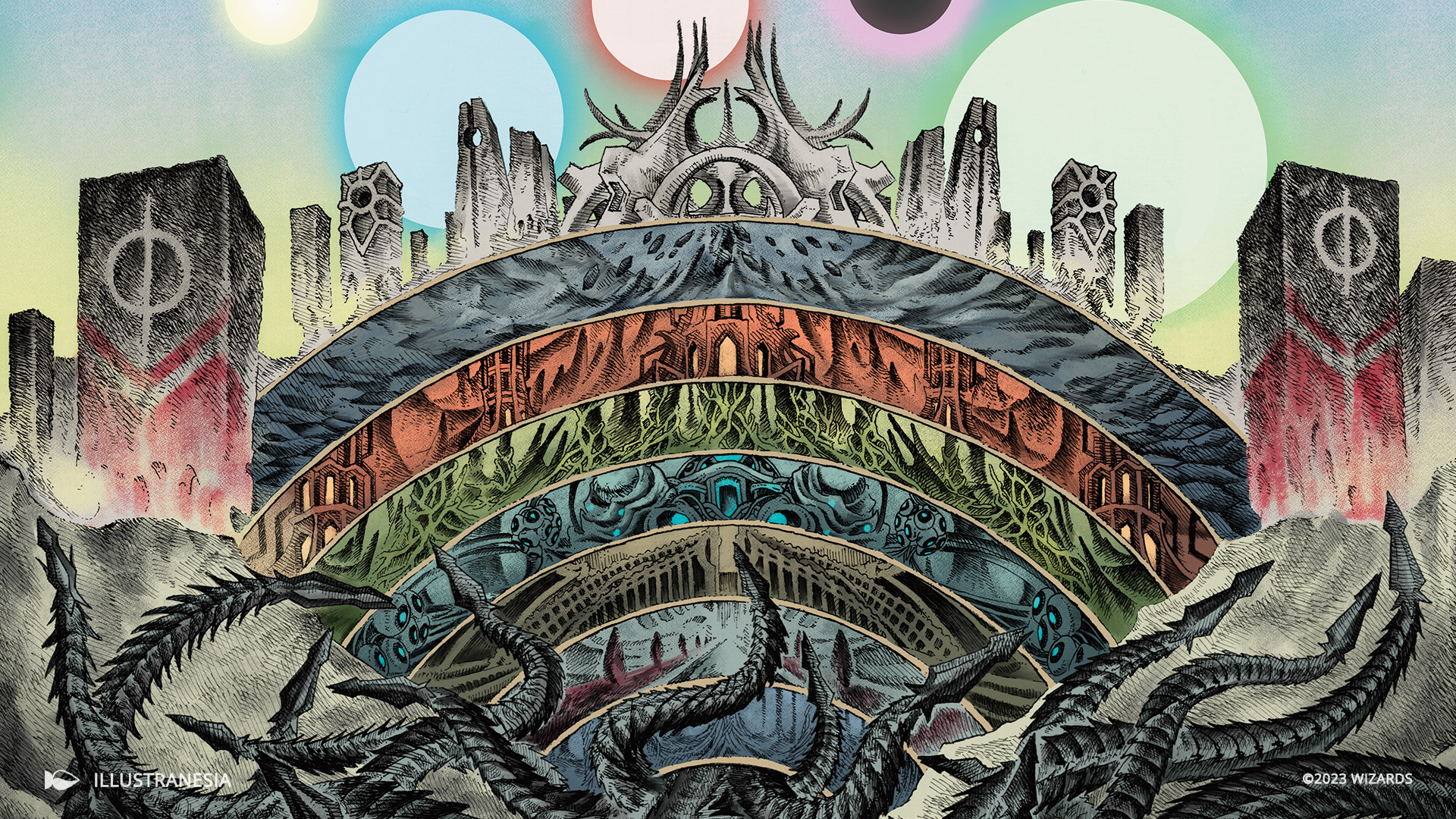
The Phyrexian Atlas by Illustranesia. Traditional.
“The Phyrexians took what used to be Mirrodin and brought it underground, so the Mirrans couldn’t reach the sun’s influential mana. It’s also why the Phyrexians built the Monumental Facade shell over it all. The Facade crumbles and reshapes itself, and the sands in Mirrex are literally disintegrated pieces of bones and metal. The air is so dense with particulate smog that when you’re breathing in New Phyrexia, you are literally breathing in New Phyrexia.”
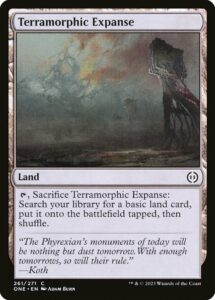
Terramorphic Expanse by Adam Burn.
This odd, almost symbiotic relationship means we see a landscape and a people literally as One, and it’s reflected in the exterior motifs present across the plane within each color definition. Imagine seeing these places for the first time—it’s beautiful, but unsettling.
White is the ossified, porcelain-like metal and sinew of Elesh Norn:
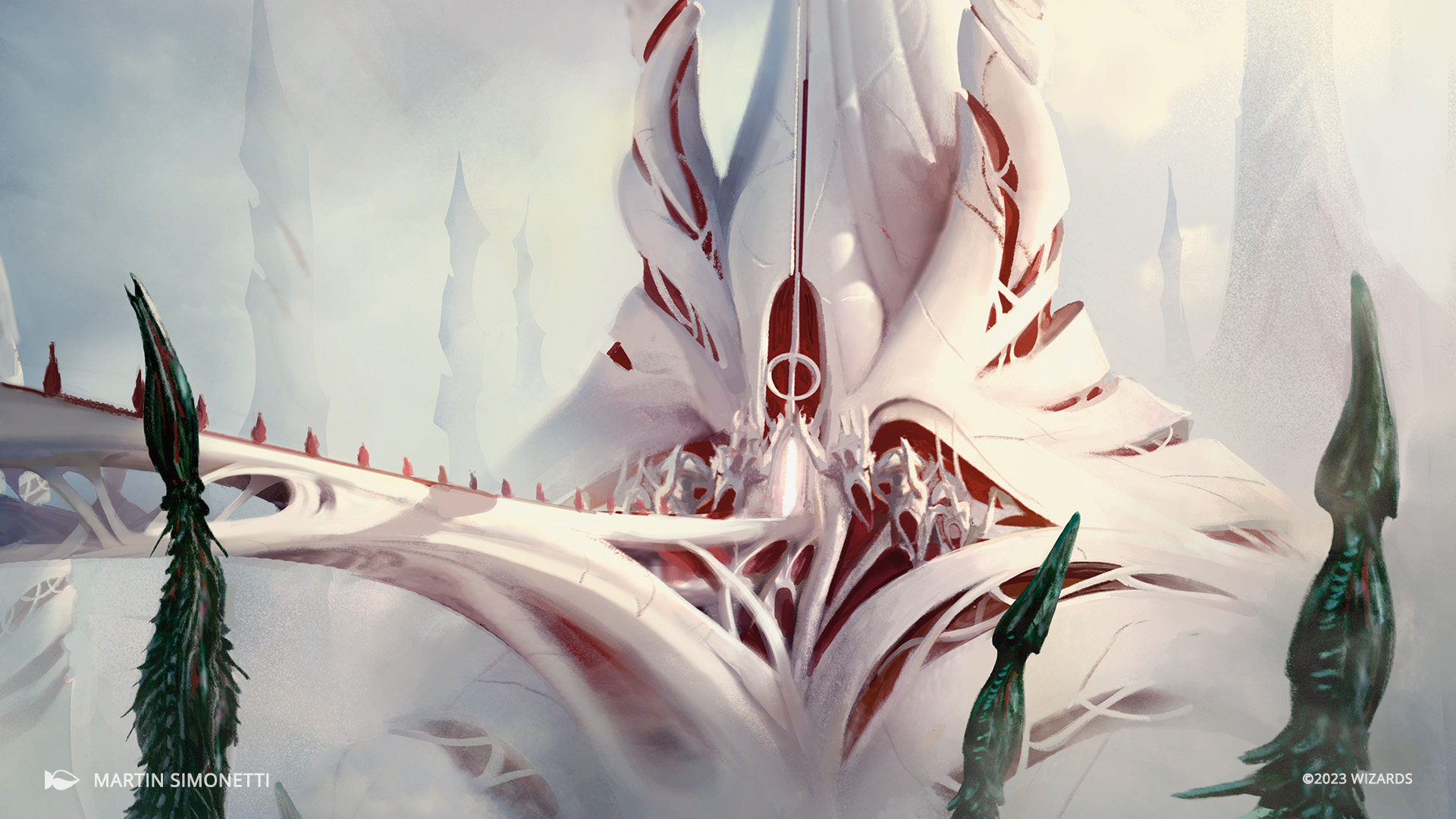
The Fair Basilica by Marc Simonetti. Digital
Blue the chrome, oil-slicked liquid metal drained from what was once the Quicksilver Sea.
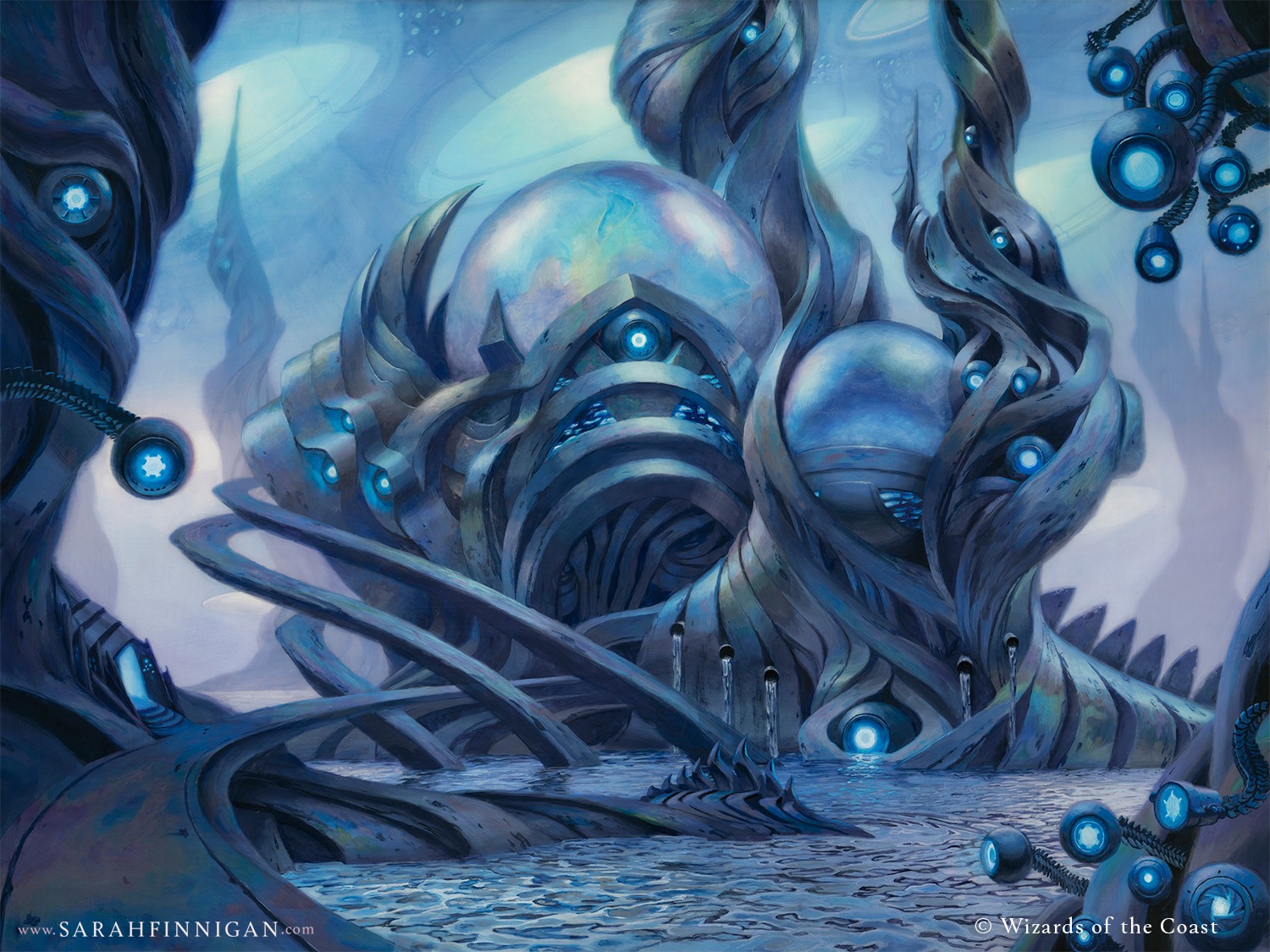
The Surgical Bay by Sarah Finnigan. Traditional.
Black is necrogen-wracked, wrought iron monstrosity born from the Mephidross Swamp.
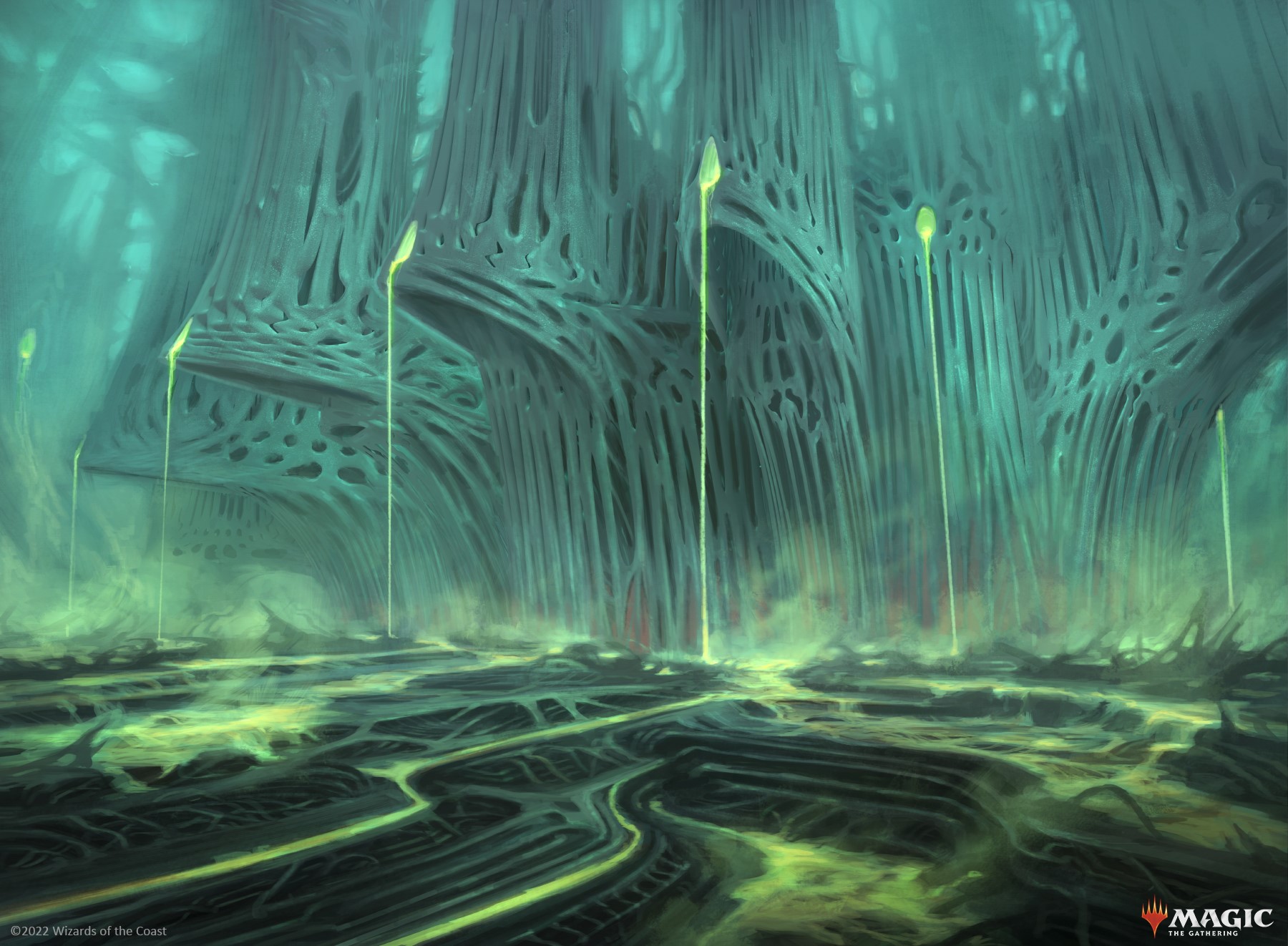
Swamp by Julian Kok Joon Wen. Digital.
Red is metal made molten, and a love letter to industry, iron, and an ideology that holds work above all other things.
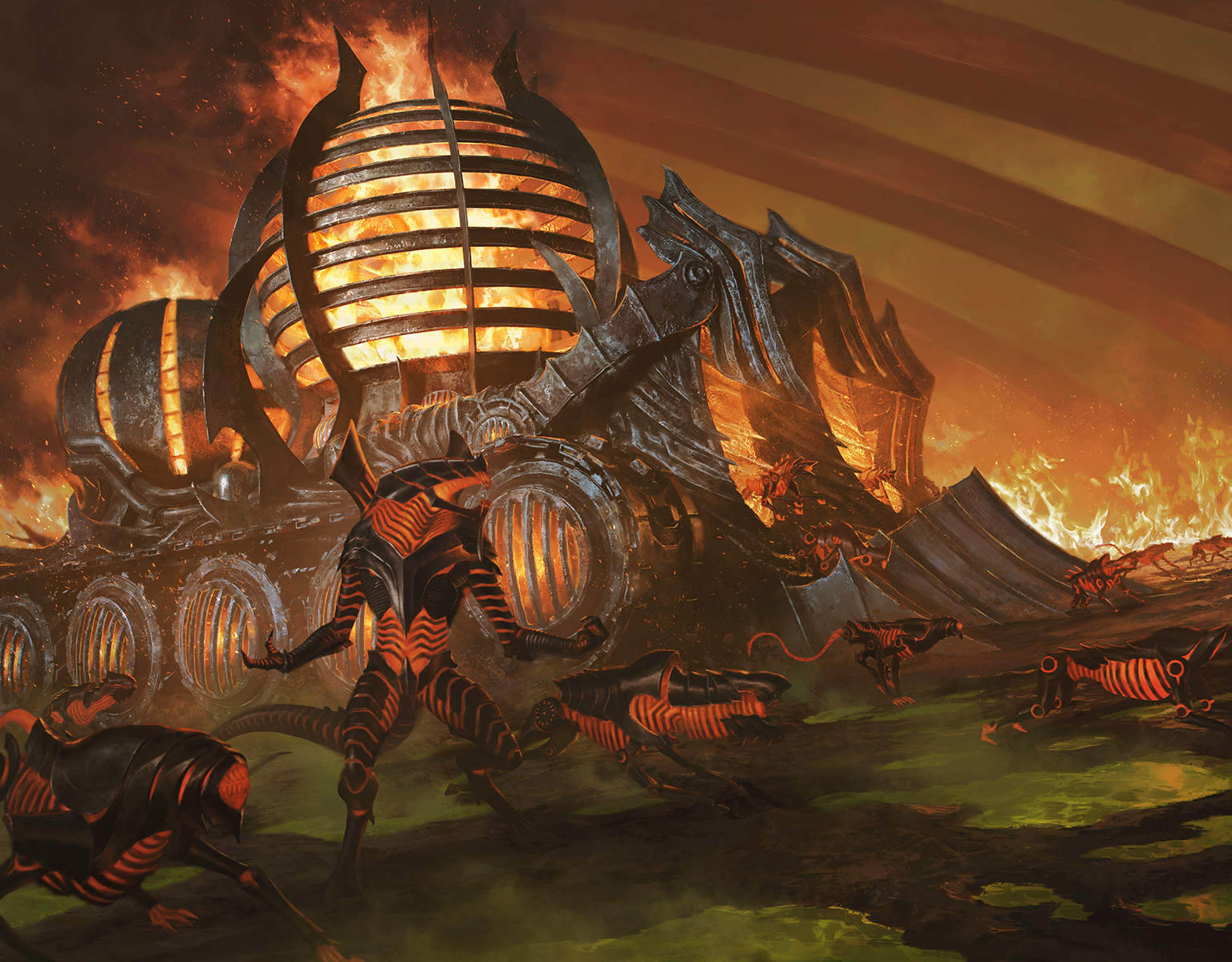
Urabrask’s Forge by Lie Setiawan. Digital.
And Green is the literal representation of what happens when copper oxidizes, full of verdigris, but also unnatural vine. Fong told me that in these landscapes especially, the designs mimic the “natural” world it once was, and in doing so, mocks it as the new amalgamation it is.
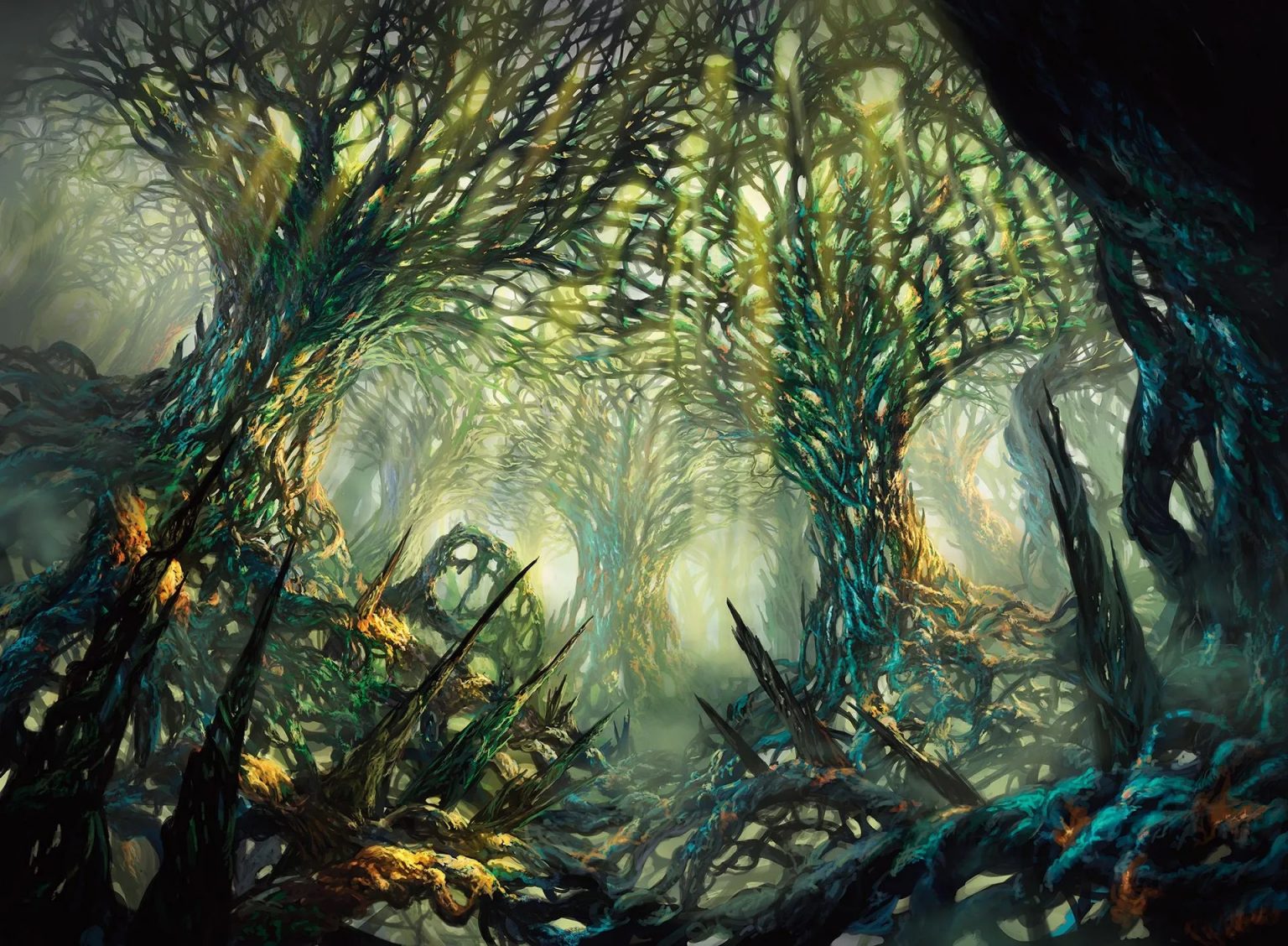
The Hunter’s Maze by Alayna Danner. Digital.
Each defined sphere is wholly unique, yet united under the single phyresis-induced similarity that blurs the lines between what was, what is, and what can be. The next step inward is to land our craft, and see just how similar plane and people may be, boots on the ground.
Disney Detail Level Two
“You’ve walked into town, you’ve just come to Main Street. You can see the parkway, the median strip, the trees, the benches.”
At Level Two we’ve now landed amongst the Phyrexian populous, and we walk among them. Fong explains it as “a Hieronymus Bosch painting …. A living hellscape. Everything is full of things that will eat you. And everything is moving, like watching a crowd, or a tsunami. But it’s more threatening because it’s organized. And it’s VAST.”
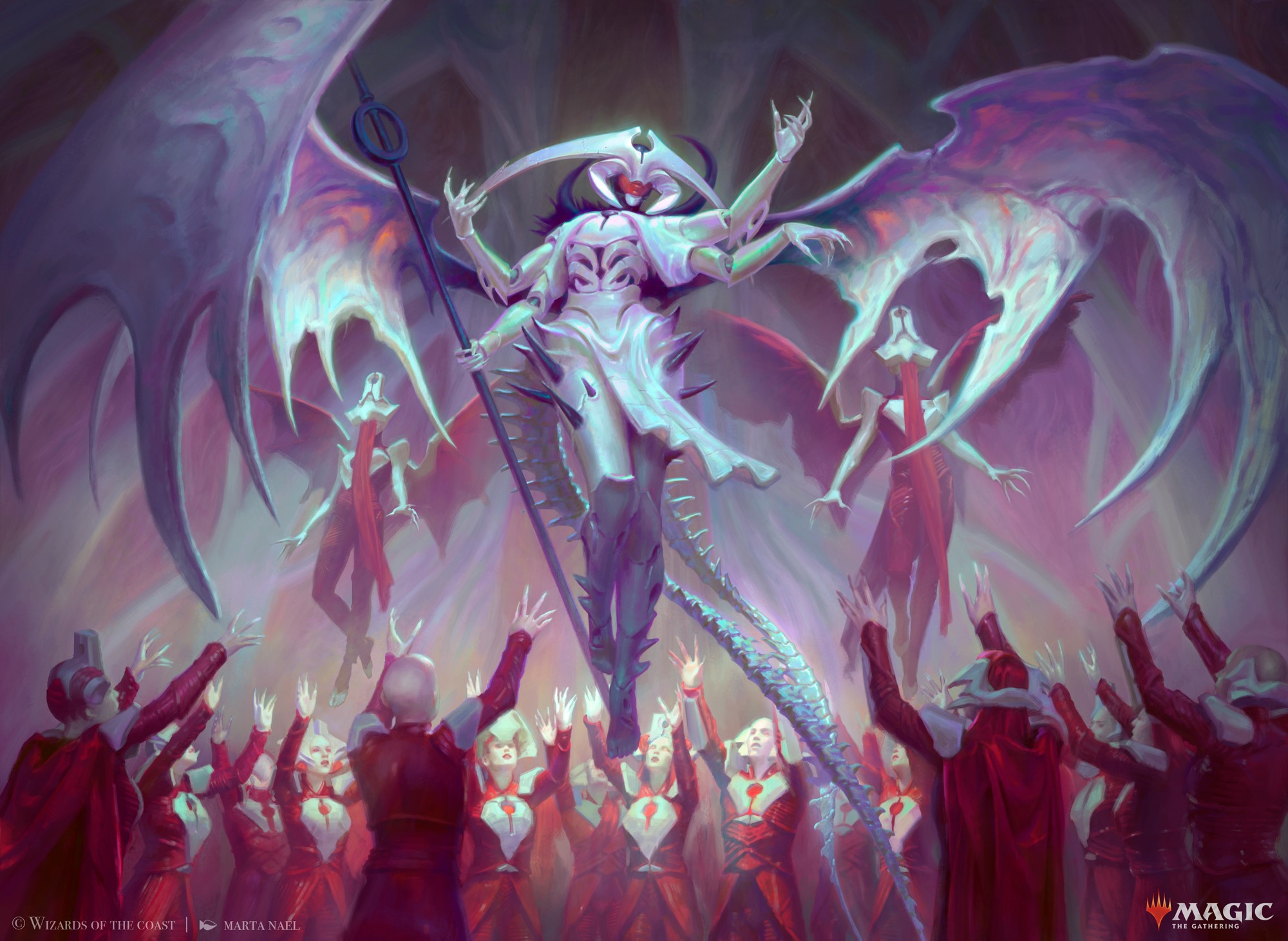
Atraxa, Grand Unifier by Marta Nael. Digital.
This society is fully realized, a literal Great Chain of Being, with a place for everything, and everything in its place. From small to large, it’s different within each specific sphere (read: color). Fong gave me the full run down in terms of both, and I’ll do my best to summarize them here.
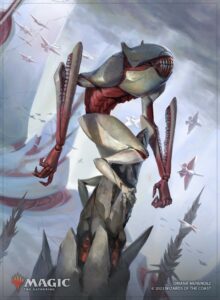
Mite Token by Oriana Menendez. Digital.
The smallest are skitterlings. Although present in every sphere, they are most populous in White where teeming swarms of mites cover the ground and further exemplify the ossified nature of Elesh Norn’s favored.
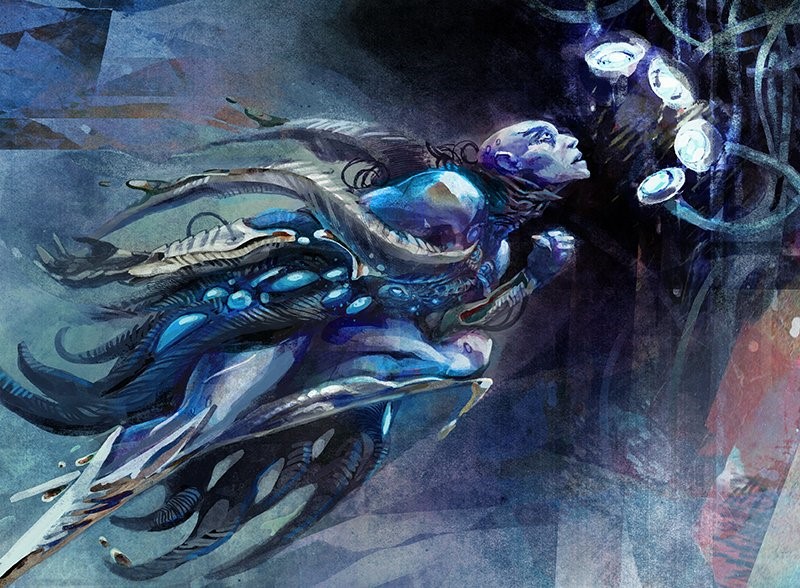
Aspirant’s Ascent by Eli Minaya. Digital
Next are Aspirants—those literally aspiring to compleation, and Fong mentioned it was a conscious intention “make freaky look sexy, like a Tarsem Singh movie.” She describes an example of Progress Engine faction in Blue with “Minaya’s piece is also a perfect example of our ‘everything is eyeballs’ aesthetic.”
From here, once a Phyrexian is fully compleated, it becomes a sort of “Choose Your Own Adventure.”
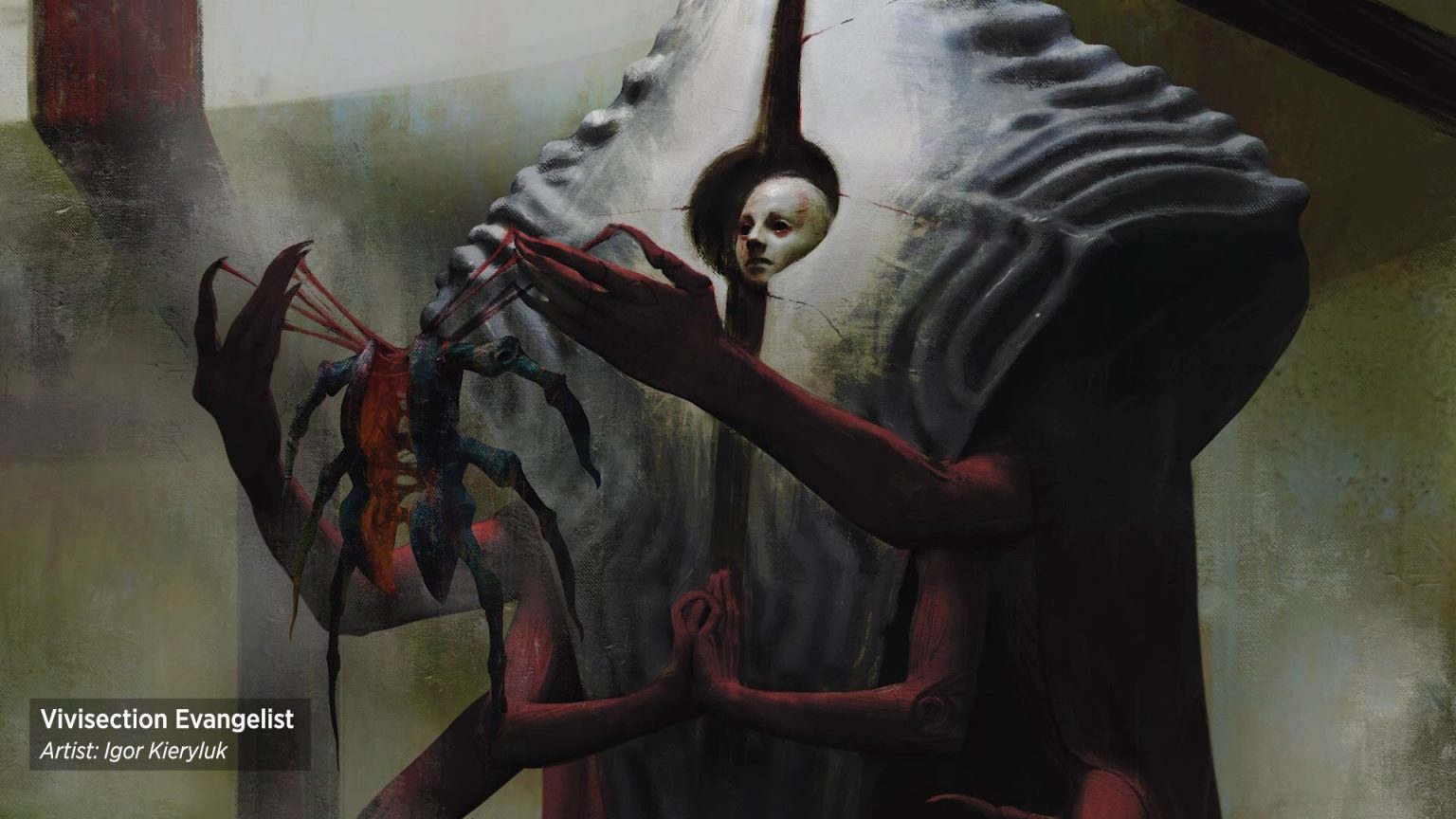
Vivisection Evangelist by Igor Kieryluk. Digital.
Priests have undergone full compleation, and are stewards of Phyrexian society under their respective doctrines. I’d like to take a quick aside, as this artwork especially shows a bit of the dichotomy of design in White and Black. Fong detailed that they are inverse of one another in many cases, what she describes as concavity vs convexity: in Black we see etched skeletons and gleaned flesh, versus White’s plated exoskeletons and exposed sinew. This is a rare example of a bit of both.
Conversely, moving away from Priests and into secular society, Centurions are of similar standing, but mobilized for war, whether across the Multiverse or at home against other Phyrexians.
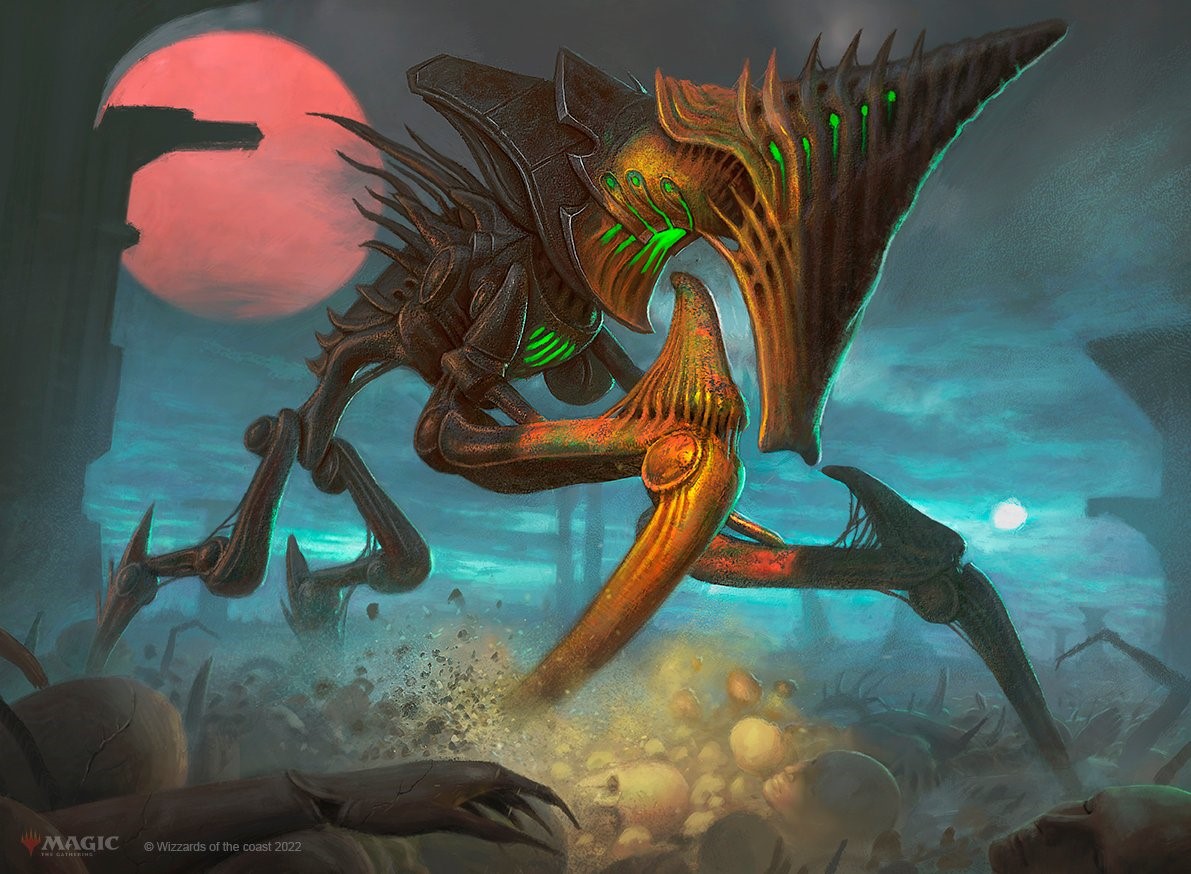
Armored Scrapgorger by Martin de Diego Sádaba. Digital.
The final two “classes” are the biggest of the big. Goliaths, often inspired by previously encountered animals or beasts, tower over the landscape (quite literally).
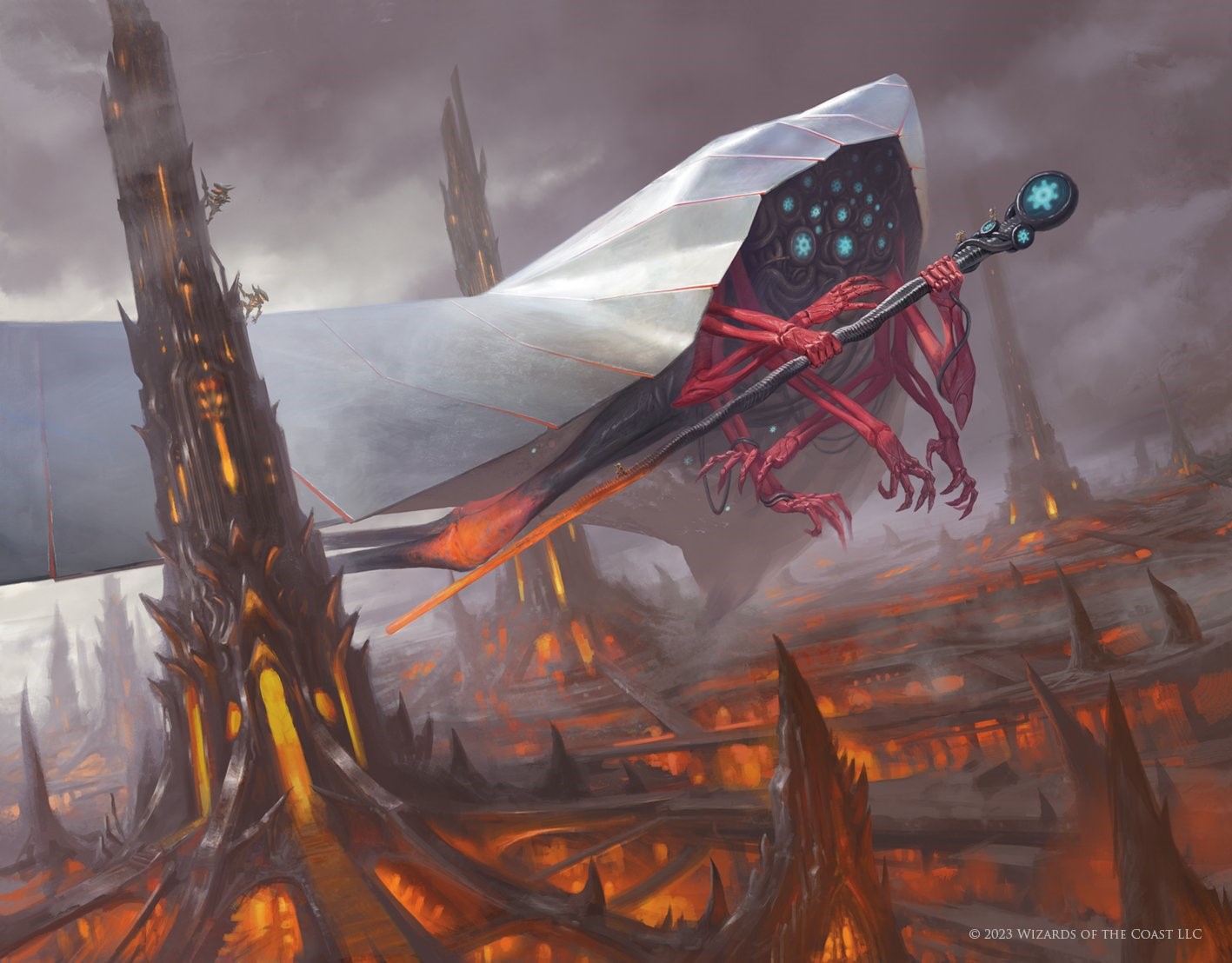
Ovika, Enigma Goliath by Antonio José Manzanedo. Digital.
And the Domini, who are nothing short of the incarnate landscape themselves. Note how the idea of forged and reforged come alive, while at the same time showing massive scale.
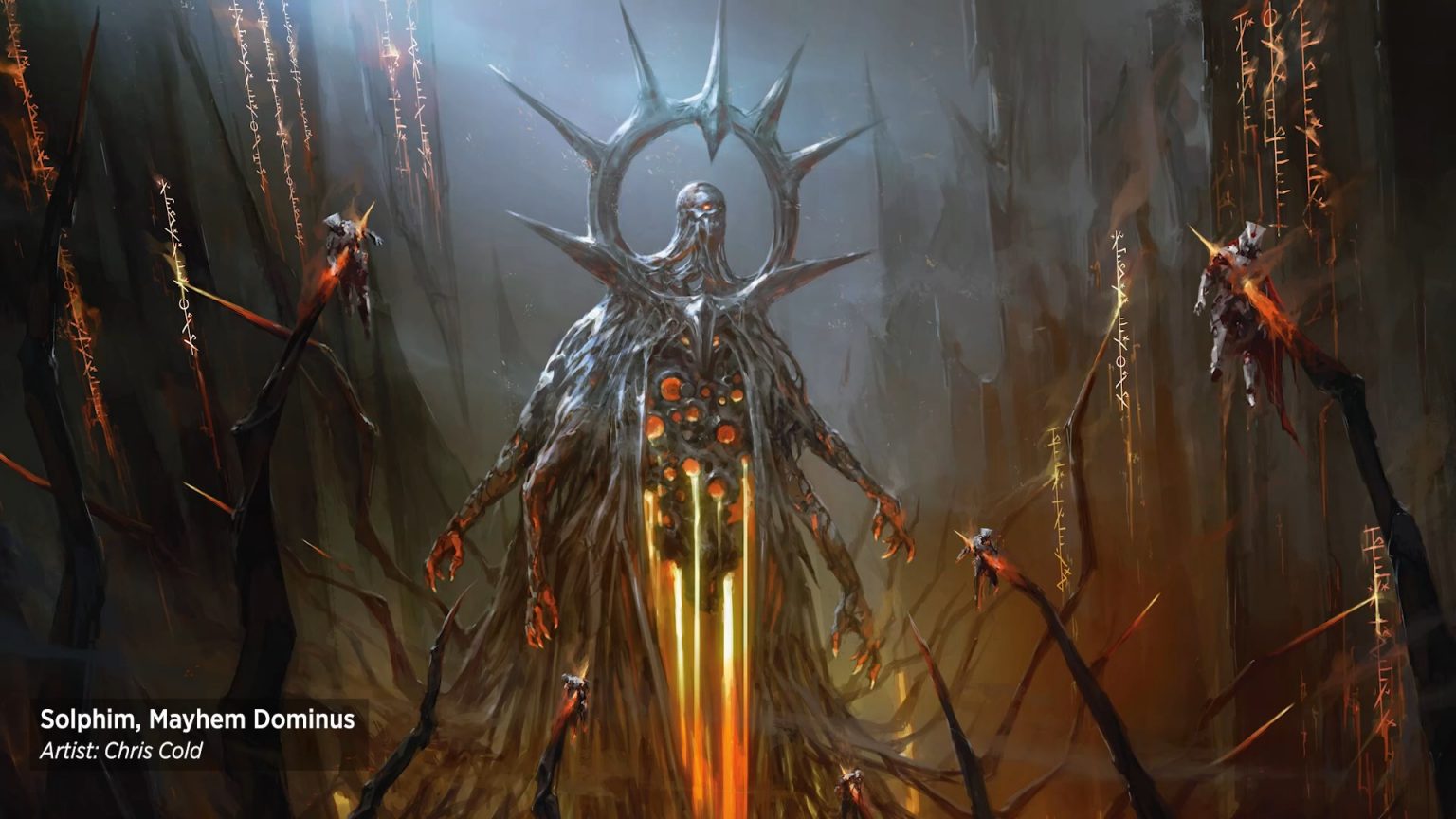
Solphim, Mayhem Dominus by Chris Cold. Digital.
This is what moves across the world, and the physical beings that inhabit this hellscape. But diving deeper, we soon discover how they came to be, and a bit of the why behind the ways things are, as we see it.
Disney Detail Level Three
“You’re standing on the sidewalk and now you’re looking at a fine house. You can see the color, the texture, the materials, the scale, the architectural style.”
We’ve seen the Where, and then the What. But how does the Why play into this world? Detail Level Three is about Phyrexian behavior on a large scale, and we begin to unearth a prehistory.
The Praetors, who Fong emphasized were vatborn (test tube subjects in search of perfection) and never “regular” people: “take a color ideal and drive it to its extreme.” These extremes are then reflected in societal norm and action, and becomes what each faction does both literally, and in many cases, also unassumingly. Phyrexians mimic what they’ve seen, and do it so well it’s hard to distinguish what came first; they are perfectionists while at the same time lacking intention. In her words, “they do the thing and do it better, but don’t understand why.”
A few quick examples.
White Phyrexians form congregations, sing hymns, and pay homage via their facades, and yet it is not in service to a deity. It’s simply what they’ve seen and absorbed from past society invasions.
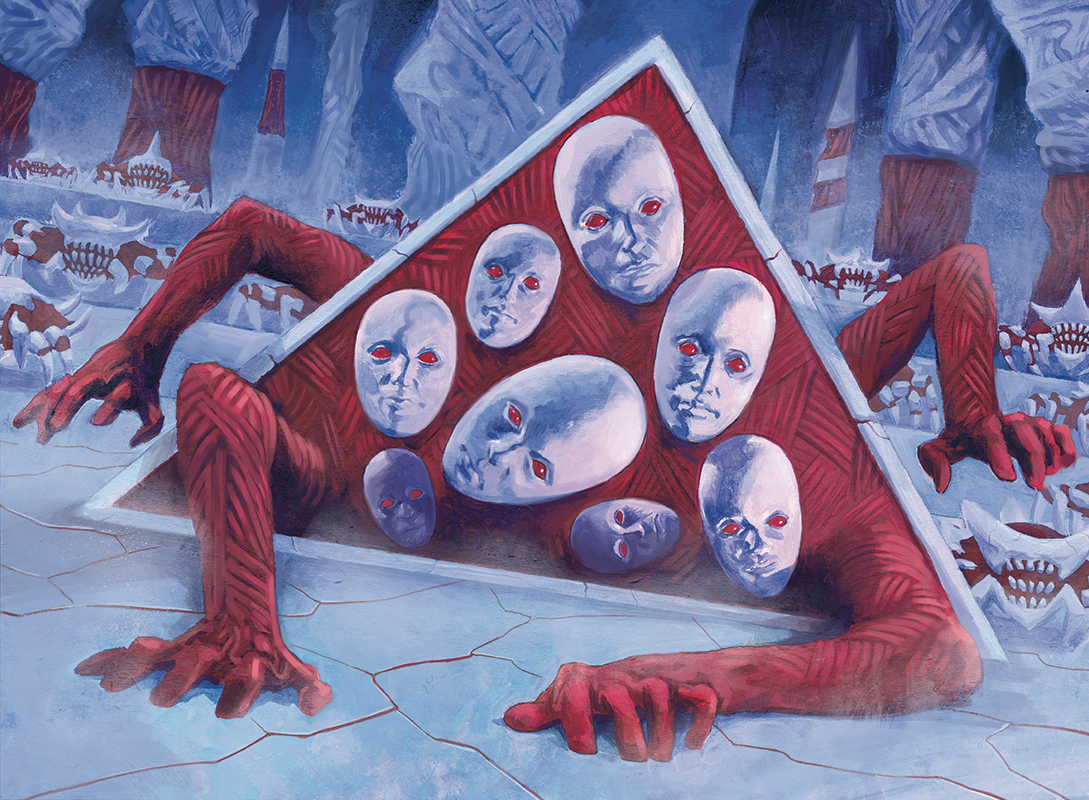
Crawling Chorus by Michael Walsh
Blue Phyrexians perform surgery, chemistry, and experiments, but without an actual definition of the perfection they seek. As a result, Fong says, “they’ll straight up kill people and they will consider it a useful way to gather data.”
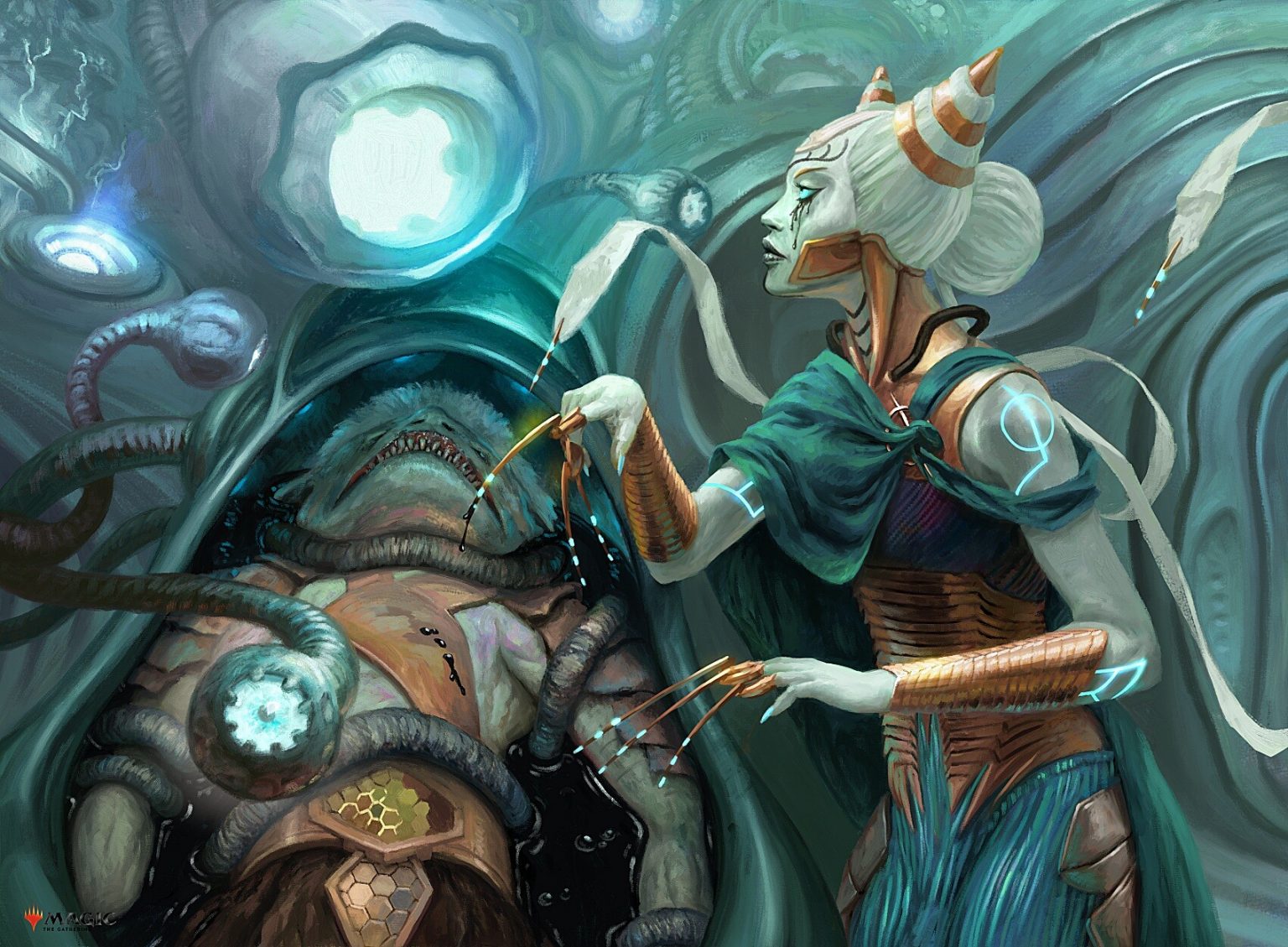
Prologue to Phyresis by Simon Dominic
In Red, it’s all about the work, even if it’s fruitless, and even if the end result is garbage only to be broken down and reforged again. Fong said to think of Red Phyrexians as “content creators on a conveyor belt, making things to be consumed and regurgitated.” They do the thing because that’s what they do, and then they do it again.
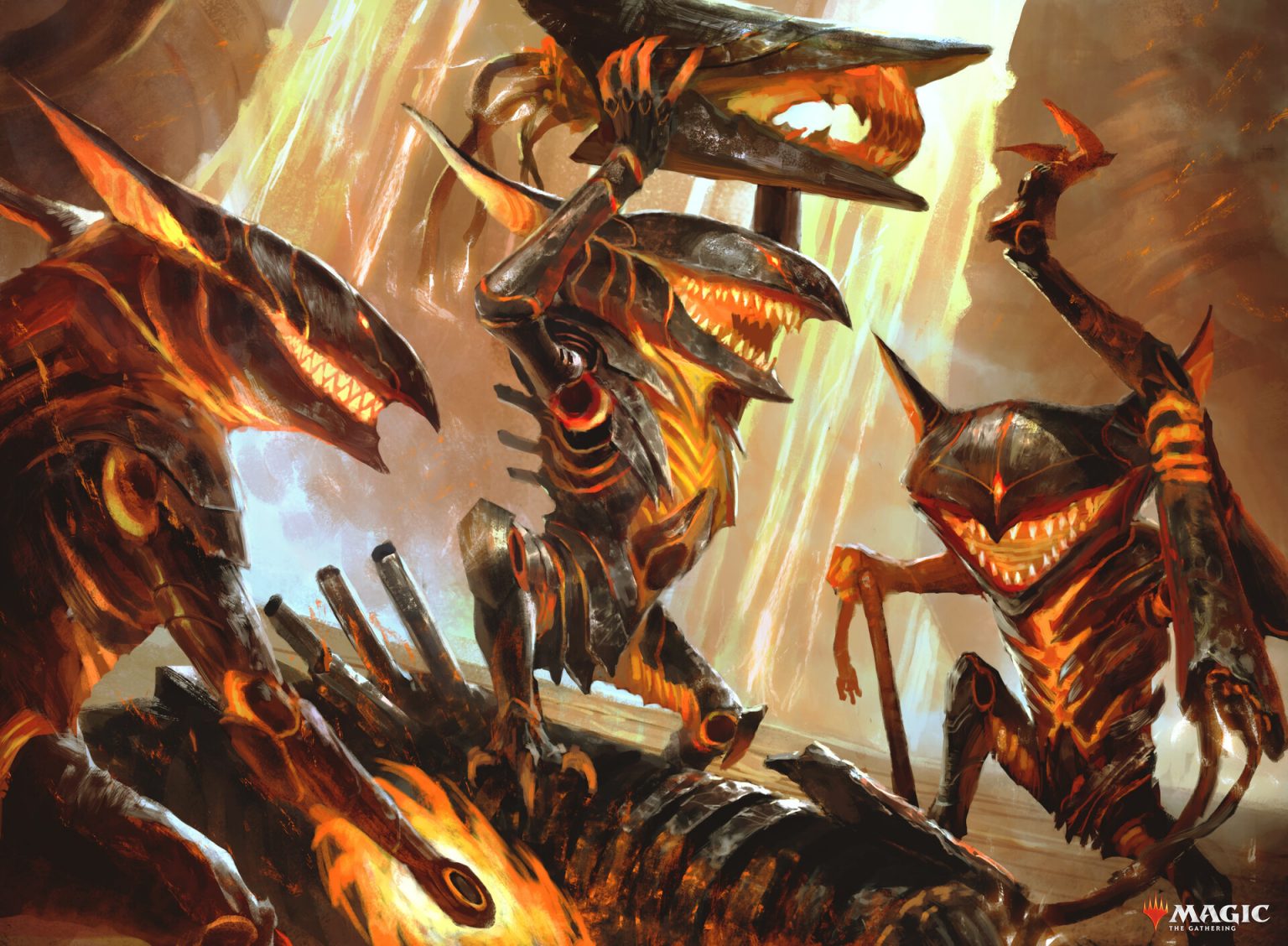
Gleeful Demolition by Tuan Duong Chu
While these intentions, or lack thereof, are almost universally true, Fong mentioned that we get a small glimpse into possibilities of self-actualization.in the Ixhel story, “A Hollow Body” by Aysha U. Farah. It’s worth reading to see what sort of future that might tell, so take a moment once you’re finished here.
We’ve got one Level to go, and it takes us to one of the most nuanced bits of what it means to be a Phyrexian.
Disney Detail Level Four
“You’ve actually gone up to the front door and you’ve grabbed the door knocker and you’re knocking on the door, feeling the temperature of the metal and the texture of the metal, whether or not it’s been deformed, if there’s paint on it, if the paint is slightly chipped.”
I know we’ve only scratched the surface of this immense culture, but it is literally the scratching of the surface (how they write), and the speaking that comes as a result, that is Detail Level 4.
Fong referenced the work of Phyrexian Linguists Mary Kathryn (MK) Amiotte-Beaulieu and Bella Guo, who have delineated how each Praetor both speaks and writes:
“Elesh Norn speaks like a priest, Jin-Gitaxias uses obscenely big words and is very arrogant, Sheoldred is tricky and conniving, Urabrask is terse, Vorinclex roars. This also translates to their handwriting, and Phyrexian class can be seen by how they write.”
She explained that each Phyrexian writes differently, and it is the way in which their digits scratch the surface that shows how “advanced” that particular Phyrexian might be. Guess who is the least proficient writer? (It’s Vorinclex).
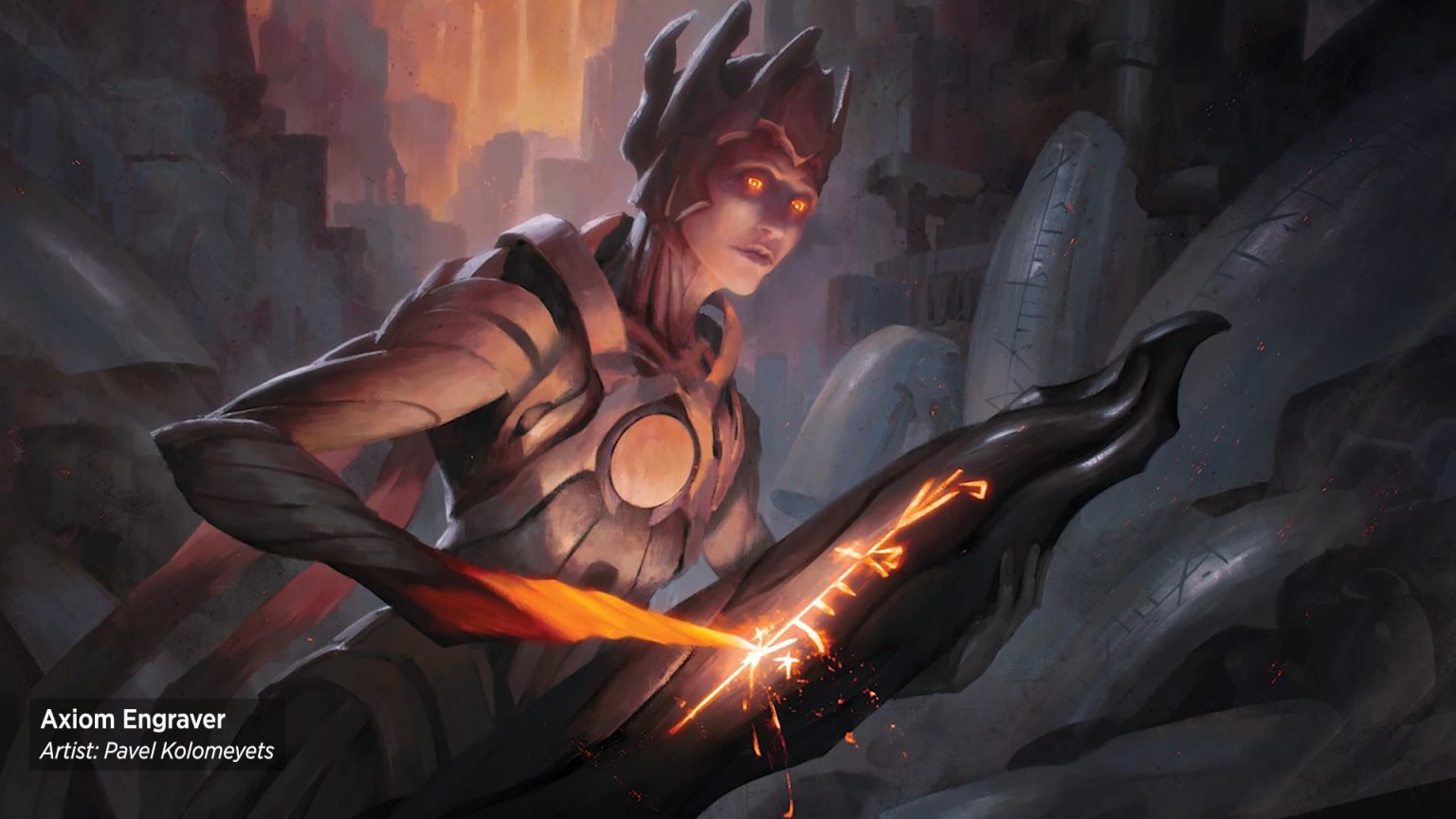
Axiom Engraver by Pavel Kolomeyets
As language and writing has developed, each faction has created their own “bible” in the image of Yawgmoth’s original Phyrexian Scriptures. Fong likened it to different versions of religious texts, and how they can be translated and changed over time and geography, and depending on who wrote them, add entirely new meanings.
And the brilliant part? No matter which book you might be reading, they all lead back to ONE thing.
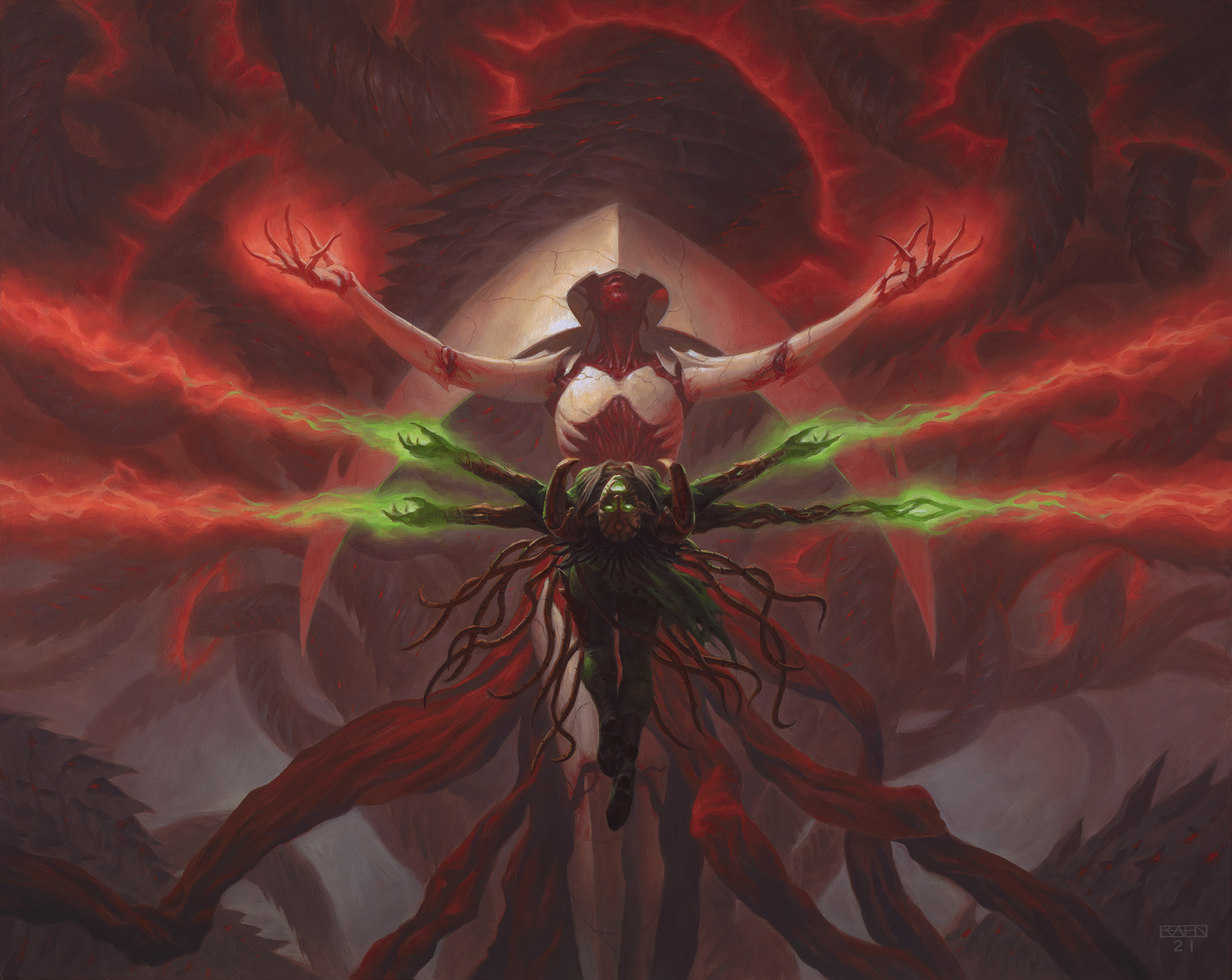
All Will Be One by Chris Rahn
Wrapping Up
Landscape. Society. Culture. Language. Writing. It’s for these and everything we’ve covered so far that I simply cannot think of another place in Magic that rivals Phyrexia in detail. You can feel it in your bones, and if that’s not success, I sure don’t know what is. All these things make Phyrexia one of the deepest built planes in the Multiverse, and of the thirty year history of Magic: The Gathering. It’s an amazing feat of worldbuilding to convey everything so clearly and succinctly, and to those folks like Grace Fong and Art Director Ovidio Cartagena working on this now, and all those who laid the groundwork and came before, bravo.
Donny Caltrider (he/him) is a Senior Writer at Hipsters of Coast writing about all things related to the art of Magic: The Gathering and the larger imaginative realism genre. He has an M.A. in Museum Studies from Johns Hopkins University and enjoys telling stories about art, objects, and the intersection of fantasy with real-life. When he’s not writing for Hipsters or working with artists, you can find him traveling with his wife, petting his two cats, and watching the Baltimore Orioles.

